In 1969, the moon’s surface met the first human footprints. It’s already a long time ago since after it happened, but if you think about it, only 12 humans have ever landed on the moon until now. Yes, they’re 12, if you are not aware of that.
If we are to ask you the names of the astronauts who walked on the moon, most people would say Neil Armstrong and maybe even mention Buzz Aldrin. Get to know them more, as well as the ten more astronauts who have ever walked on a celestial body other than earth.
Apollo 11 (July 20, 1969)
 1. Neil Armstrong
1. Neil Armstrong
Before he became one of NASA’s most famous astronauts, he was an officer in the US Navy during the Korean War. After the war, he entered college to earn a degree in aeronautical engineering. Then, he worked as an experimental test pilot for the National Advisory Committee for Aeronautics (NACA) beginning in 1955, which eventually became NASA.
Before landing on the moon, Armstrong performed the first successful space docking procedure during his 1966 Gemini 8 mission. He served as a backup commander for the 1968 Apollo 8 mission, before being assigned as the commander in the prominent 1969 Apollo 11 mission, which landed him to the moon with Buzz Aldrin.
Armstrong was chosen to be the first man to walk on the moon, as the Apollo 11 mission was planned mainly because the NASA management saw him as a person without a big ego. And they were right. What’s admirable about Armstrong is his legendary humility.
While Armstrong was being recognized around the world and was honored with awards and parades, he always gave credit to the entire NASA team for the Apollo moon missions. Although he will always be remembered as the “first person to walk on the moon,” he considered the mission’s biggest achievement was successfully landing the lunar module. He later said:
“Pilots take no special joy in walking: pilots like flying. Pilots generally take pride in a good landing, not in getting out of the vehicle.”
In 1971, he resigned from NASA and chose to live a normal, quiet life. Unlike former astronauts who later joined the government after leaving NASA, Armstrong declined all the position offered to him by different political groups. He served as a professor of Aerospace Engineering at the University of Cincinnati for eight years, helped investigate spaceflight accidents and acted as a spokesman for various businesses.
Later on, Armstrong gradually withdrew from publicity tours and autograph signings. He didn’t like it when his sayings were being used without his consent. He filed lawsuits, then he donates the settlement money to his alma mater or some charity. He stopped giving autographs in 1994 after he discovered that his signed items were being sold for huge amounts of money. Armstrong didn’t seem to care about fame and fortune.
Armstrong died in 2012 at the age of 82 due to complications after a bypass surgery.
2. Edwin “Buzz” Aldrin
Before joining NASA in 1963, Buzz Aldrin flew 66 combat missions as an Air Force pilot during the Korean War. He first launched into space on the Gemini 12 mission in 1966 as the pilot.
Aldrin was chosen to accompany Armstrong during the first moon landing in the Apollo 11 mission. He served as the mission’s Lunar module pilot and became the second person (now first among the living astronauts) to set foot on the moon.
Although he was famous for being second, he made a lot of firsts as an astronaut. Aldrin took the first EVA (extra-vehicular activity) selfie in 1966 during his Gemini 12 mission. He was also the first person to ever urinate in the moon. He was also the first person to hold a religious ceremony on the moon. Aldrin had taken a home Communion kit and took Communion on the lunar surface, but kept it as a secret. That made the Communion elements as the first food and liquid ever consumed on the Moon.
Aldrin also retired from NASA in 1971 and then resigned from the Air Force in 1972. After his career as an astronaut and pilot, he wrote numerous books and given lectures around the world to support and promote space exploration.
Besides that, he appeared in numerous film and television series, starring as himself in science-related projects like Transformers: Dark of the Moon, Space Brothers, and The Big Bang Theory. Aldrin also lent his voice talents to the 2012 video game Mass Effect 3, and in The Simpsons episode “Deep Space Homer.” He even participated in the reality TV show “Dancing with the Stars.” And if you’re wondering if Toy Story’s Buzz Lightyear was inspired by him – yes, it is.
From Apollo 12 (November 19-20, 1969)
3. Charles “Pete” Conrad Jr.
Before joining NASA in 1962, Pete Conrad worked as a test pilot for the US Navy. He retired from NASA in 1973 after being the commander of Skylab 2, the first manned Skylab space station.
Conrad headed the second lunar landing mission, the Apollo 12, in 1969. He spent more than a day exploring the surface of the moon. Together with Alan Bean, they were on the Moon for two days. While on the surface, they conducted lunar experiments and installed the first-ever nuclear power generator station on the Moon.
Before being assigned as a commander for Apollo 12, he had his stint as a pilot, backup commander and commander of Gemini 5, Gemini 8 and Gemini 11 missions, respectively.
After his career in the military and NASA, he worked for private businesses including American Television and Communications Corporation (ATC) and the McDonnell Douglas Corporation.
Conrad died in 1999 at the age of 69 from internal injuries sustained in a motorcycle accident.
4. Alan Bean
During the Apollo 12 mission, Bean spent almost 3 hours walking on the moon’s surface. He was the lunar module pilot. After Apollo, he became commander of the Skylab 3 mission in 1973.
Bean was also from the Navy, but he retired from the Navy in 1975 as a captain. After the Skylab mission, he resigned from the astronaut program but continued to be with NASA as head of the Astronaut Candidate Operations and Training Group.
He eventually left his post in NASA in 1981 to devote his time painting. Bean is the first and only artist to have visited another world, so his paintings of the lunar environment were firsthand representations. His paintings include Lunar Grand Prix and Rock and Roll on the Ocean of Storms. He is also the only artist to use real moon dust in his works.
Apollo 14 (February 5-6, 1971)
5. Alan Shepard
At the age of 47, Alan Shepard became the fifth and oldest person to walk on the Moon, and the only one from the Mercury Seven astronauts to do so. Long before the Apollo 14 mission (the third successful lunar landing mission), Shepard had his share of accomplishments as an astronaut.
While a US Navy test pilot, Shepard was chosen as one of the Mercury Seven astronauts in 1959. He was also the first American launched in space aboard the Freedom 7 spacecraft in 1961. He was almost the commander of the first manned Gemini mission in 1963, but he was barred because he was diagnosed with Meniere’s disease.
Shepard had the condition fixed surgically, and he was made eligible to lead the Apollo 14 mission to the Moon. He was responsible for the most precise landing of all the lunar modules ever. While at the moon, he famously hit two golf balls on the lunar surface.
After his retirement from NASA in 1974, he became a board member for many corporations. He ran his own company, named the Seven Fourteen Enterprises, and made a fortune in banking and real estate.
Shepard died of leukemia in 1998 when he was 74 years old.
6. Edgar Mitchell
Edgar Mitchell served as the lunar module pilot for the Apollo 14 mission. Together with Shepard, they spent 4 hours and 35 minutes on the surface of the moon and collected 94 pounds of moon rock.
Before his Apollo mission, he joined the Navy in 1952 as a test pilot and then got selected as one of the astronaut corps for NASA in 1966. He retired from NASA and the Navy in 1972 after the lunar mission.
Since leaving NASA, he pursued his interests in psychic and paranormal experiences with the foundation of the Institute of Noetic Sciences. He became controversial for his views on UFO and aliens, as he believed that the Earth has been visited by the extra-terrestrial beings and various governments are just suppressing the truth. He also wrote books on mystical experiences and psychic exploration.
Mitchell died under hospice care in 2016 at the age of 85.
Apollo 15 (July 31-Aug 2, 1971)
 7. David Scott
7. David Scott
David Scott was the first from the Group Three astronauts to be chosen to fly and was the first to command a mission of his own. In 1966, he worked alongside Armstrong during the Gemini 8 launch. Then in 1969, he worked a command module pilot for Apollo 9 mission and backup spacecraft commander for Apollo 12.
Together with James Irwin at the Apollo 15 mission in 1971, they were the first to land between two lunar mountains, since the previous missions always landed on flat plains on the Moon. They were also the first to use the first lunar rover, which allowed them to travel much further from the lunar module.
After working as an astronaut, he served as director of NASA’s Dryden Flight Research Center and held the position until he retired in 1977. He also served as a consultant on the BBC TV series Space Odyssey: Voyage To The Planets. Scott was also involved in the “postage stamp incident” in which he took unauthorized postage stamp covers to the moon with the intent to sell them afterward to a German stamp dealer.
8. James Irwin
The 1971 Apollo 15 mission was Irwin’s first and only flight to space. He served as the lunar module pilot for the mission. But before that, he worked as an astronaut support crew for Apollo 10 in 1969 and as a backup lunar module pilot for Apollo 12.
During his moon landing, he helped collect 77.5 kilograms of moon rocks with Scott and a core sample from 10 feet below the moon’s surface with Scott.
Irwin left NASA in 1972 to become a preacher. He founded a Christian organization called the High Flight Foundation. He led several unsuccessful attempts to search for archaeological evidence of Noah’s Ark in Mount Ararat in Turkey. He also spent the last years of his life spreading the Christian gospel.
During his work in the surface of the moon, NASA doctors first monitored the earliest symptoms of Irwin’s heart condition. He later on suffered at least three serious heart attacks – the first one occurring less than two years after Apollo 15. He died in 1991 after his third heart attack at the age of 61. Irwin was the first to die of the 12 men who have walked on the moon.
Apollo 16 (April 20-23, 1972)
9. John Young
John Young was the commander of the fifth manned moon landing mission, the Apollo 16. The mission almost had to be aborted due to problems with the command service module’s main engine. But they successfully landed on the lunar highlands in 1972.
Young was the longest-serving astronaut in the history of NASA. He is the first person to make six space flights during his 42 years of service and has been the only astronaut to have piloted and led four classes of spacecraft such as the Gemini, Apollo Command/Service Module, Apollo Lunar Module, and the Space Shuttle. To add to that, he was the first to orbit the moon alone during the Apollo 10 mission in 1969 and was one of the tree people to have flown to the moon twice.
As part of Gemini’s first manned flight in 1965, he achieved some notoriety by smuggling a corned beef sandwich into the flight – an action which he was reprimanded for. But then, Young was assigned to different space missions throughout his career, until being assigned as a commander for Apollo 16. After Apollo, he served the Space Shuttle as a Chief of the Astronaut Office in 1974.
He only retired from NASA in 2004, unlike other astronauts before him who usually resigned from their NASA duties shortly after their walk on the Moon.
10. Charles Duke
Charles Duke was a brigadier general in the US Air Force when he joined NASA in 1966. His flight on Apollo 16, his only space mission, made him the tenth and youngest person to walk on the moon. He served as the lunar module pilot of the mission. Together with Young, he deployed a cosmic ray detector and an ultraviolet camera on the Moon’s surface.
He retired from NASA in 1975 and became an active Christian lay minister to prison inmates. He also pursued business opportunities with the foundation of Duke Investments.
Apollo 17 (December 12-13, 1972)
 11. Eugene Cernan
11. Eugene Cernan
Being a Navy pilot, Eugene Cernan was chosen by NASA in 1963 to participate in the Gemini and Apollo programs. During his service at NASA, he traveled to space thrice: as a pilot for Gemini 9A, as a lunar module pilot for Apollo 10 and as a commander for Apollo 17 – the last Apollo mission. He was also the last man to re-enter the lunar module, making him the last person leave his footprints in the surface of the Moon.
The Apollo 17 mission marked the longest lunar landing flight, with Cernan and Harrison Schmitt spending more than three days on the Moon. After retiring from the Navy and NASA in 1976, Cernan went into private businesses.
Cernan was promoted as Executive Vice President of Coral Petroleum Inc. before he started his own aerospace technology firm in 1981, the Cernan Corporation. He also served as Chairman of the Board of Johnson Engineering Corporation which helped NASA design space exploration equipment, and as a frequent contributor to ABC-TV as a commentator.
Cernan died at a Houston hospital in 2017, at the age of 82.
 12. Harrison “Jack” Schmitt
12. Harrison “Jack” Schmitt
Jack Schmitt was the first (and the only) scientist and geologist in outer space, and the only astronaut without military experience among all of the 12 who walked on the moon. NASA selected him as a scientist-astronaut in 1965, and he worked as the lunar module pilot on the Apollo 17 mission – his only flight to space. The Troctolite 76535, a Moon rock sample Schmitt had collected, was dubbed as “the most interesting sample returned from the moon,” since it suggested that the Moon possibly had a magnetic field once.
After his service to Apollo in 1972, he continued to work at NASA as a chief of the scientist-astronauts and worked as an assistant administrator to NASA’s Energy Program Office. In 1975, he left NASA to pursue a senatorial position in New Mexico, where he won as a Republican and served for six years.
After his Senate term, Schmitt became available as a consultant in geology, business, space, and public policy. He also serves as an adjunct professor of engineering physics at the University of Wisconsin-Madison.
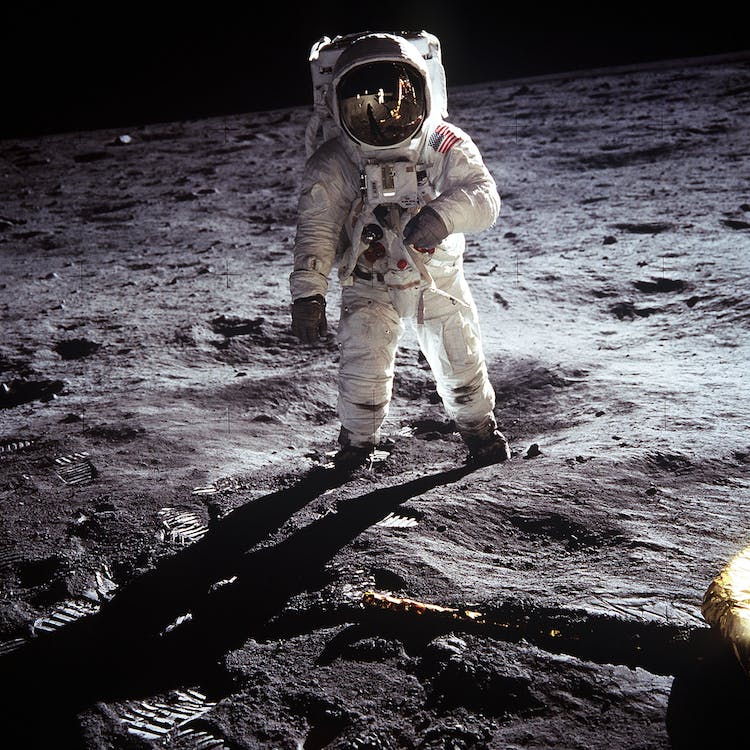
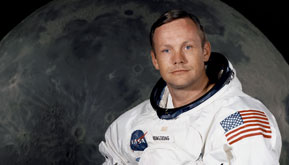 1. Neil Armstrong
1. Neil Armstrong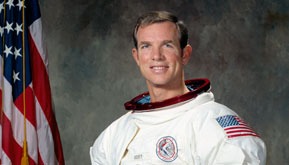 7. David Scott
7. David Scott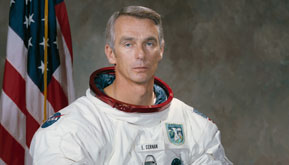 11. Eugene Cernan
11. Eugene Cernan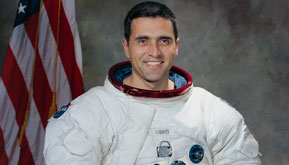 12. Harrison “Jack” Schmitt
12. Harrison “Jack” Schmitt